Xerox 4000
Last modified: Dec 13, 2024 @ 1:33 pm
In 1970 Xerox introduced the convenience copier Xerox 4000. It was a compact and quite copier, with two paper trays. This was the first copier in the world, that could copy on both sides automatically. The machine was also well suited for copying from bound volumes. Its exposure platen came right up to the edge of the machine allowing individual pages to be copied without having to open the book hat.
Later on the 4000 was produced with automatic or semi-automatic document feed, wich was a great success, especially in business offices for copying multipage unbound documents. This one feature changed the general configuration of copiers to the extent that there has never again been a true edge copier like the Xerox 4000.
In 1970, automatic density control (ADC) sensors were introduced with Xerox 4000 duplicators and subsequently used in various forms in the 5600 and 9200 families. Using the ADC sensors, somewhat frequent manual adjustments were made to the toner control.
| IMAGES |
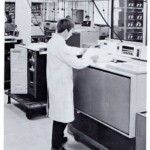
| SPECIFICATIONS | |
|---|---|
| Copy speed (per minute) | 45. First copy after 7 seconds. |
| Paper tray | 1000 sheets. Two paper trays with 500 sheets each. |
| Output tray capacity | n/a |
| Finisher/sorter |  |
| Staple function |  |
| Reduction/zoom |  |
| Document handler |  |
| Dimension and weight | |
| Depth | 72 (cm) / 28 (inches) |
| Width | 83 (cm) / 33 (inches) |
| Height | 97 (cm) / 38 (inches) |
| Weight | 315 (K grams) / 695 (Lbs) |
| Floor space requirements | Stationary: 2 x 2 (meters) / 7 x 7 (feet) Movable: 1 x 2 (meters) / 4 x 5 (feet) |
Do you have any more information about this model, or have brochures / pictures? Please leave a reply in the form below, or send an email to xeroxnostalgia@outlook.com

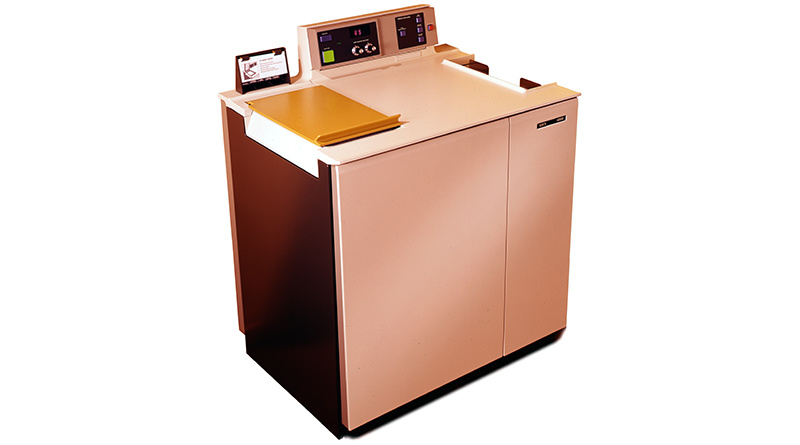
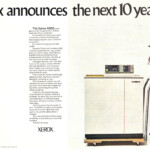
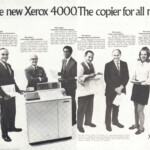
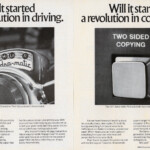
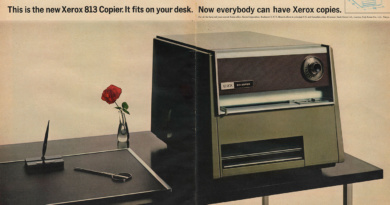
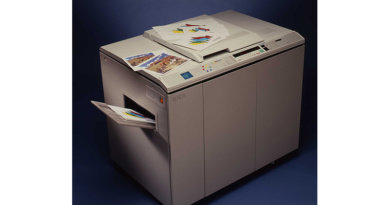
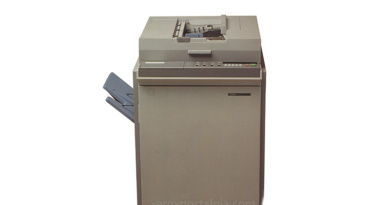
I had a 4K at the health dept in Tucson. The lady in the small room where the copier was had to go home every afternoon with splitting headaches. She had the air tested and found that it was 10 times dirtier than downtown LA! The ozone was OFF THE CHARTS! Not long after that XRX came up with a new charcoal filter as a mandatory retrofit.
My workmate and I handled three territories of 4000’s out of one car! We could change a scan-cam with all the lamp-lens alignments in a little over 20 minutes! My partner would do the back end stuff while I did the front, replacing the pre-registration switch while the ‘tin can’ was out on a drop-cloth.
Trick was getting the drim in a bag fast! Before sunlight hit it. Or spend 10 more minutes cycling the machine with the Exilite handle in the main tray and an alligator clip in the reset.
Hi fellow Xeroids, I found this site from another retired tech rep. I started with Xerox right after 4 years in the US Navy in 1969. I worked in Brooklyn & Queens in NYC. I was “lucky” enough to be chosen to be one of the first to be 4000 trained. I also installed one of the very first machines in the branch. Since I worked in Brooklyn and that machine was located in Staten Island I became the default tech. After a 4 day install I finally got it to make over 200 copies with out jamming or deletions.… Read more »
I had the downtown Brooklyn territory, for the 4000, which included the Bd of Ed from 1977-1980.
Hey Ken,
Worked with you on Long Island and you visited me at XICTMD in Leesburg, VA when I was an instructor there.
As you may recall, I also was one of the first trainees on the 4000 in March of 1970, this was before Leesburg center was built.
Good to hear from you.
Bob
I worked for field service at Rank Xerox international head office in London. I was on the 3100 family, but the 4000 project team was in the same area, so I knew all the project staff. It was a wonderful machine in concept, but a dog in terms of reliability. Consequently, it always had senior management’s attention; many people advanced their careers by leading one of the many “get well” programmes and then getting a promotion and moving off before it became apparent that the reliability hadn’t improved. I remember one occasion when yet another investigation started as the service… Read more »
What took so long to find a type of rubber that didn’t turn to jello in the A transport?
I come to London to work with 4000 on a Great Portland team. My distrikt manager Kieth Francis aked me if we had got 4000 in Sweden.Yes I said. Then you also have problems. What models of the 4000 machines do you have ? Phase V and new BS machines.- No Phase IV machines? No ! -Then you havent had problems. Later I was told by a tec.rep. We installed a lot of them 4000 Phase IV in London City ,and we had to replace them later one by one ,beccause bad performance.
4K’s needed 1,5 hours of THOROUGH maintenance every 15K.
I would like a picture of the 4000 drop cloth sales aide.
Técnico de 4000 en Rosario Argentina,máquina innovadora,al principio había problemas con los torrinton del transporte A,también con los rodillos que se ablandaba por el ozono .En Argentina las 4000 venían de Rank,no de USA,creo que era porque nuestra red es de 220v 50Hz
Selling the Xerox 4000 in the early 1970’s in New York City was a challenge- it really jammed quite easily, and the rumor in the sales force was that the product was rushed out by Xerox to compete with the IBM Copier I and Copier II (which were plain paper also). Later on the Xerox 4500 was much more dependable- and displaced a lot of older 2400 and even 3600 models. And we sales reps carried around this template of the exact size of the 4000- it really was very compact and capable at the time.
If you still have the 4000 template I would love to see a picture it. I created this sale aide while working in the then Southern Region in Dallas
Dan- thank you !!! I used that 4000 template on dozens of my sales calls!!! But no, I don’t have it anymore but I can still picture it. The last Xerox item I had was a plastic model of a Xerox 3100 desktop (complete with a little piece of paper on the platen. Long gone, unfortunately…
I worked 4000/5600 for 5 and a half years. Downtown D.C. to boot. Yes.. Bad knees and bad lower back
Hey George, we shared the same parts drop… I worked on Copiers.
Did the tips of your shoes get worn out from removing the heavy side panels?
I LOVED this product as it had a lot of new features that “groomed” techs for the bigger products. I was a Branch Product Specialist (BPS) and later technical Manager at our Cape Town South Africa branch, moving on to 9700s. Techs in SA had to be trained on the 4000 before being considered for 9400/9500 training. Many techs disliked the machine but as a team we mastered it. My senior technician could remove the A transport in 10 minutes flat. Later, when the machines went into workshop for refurbishing, holes were cut in the rear frame to replace the… Read more »
I supported 4k/45k in Oakland CA. Eventually I got the opportunity to manage the ones with lasers called Penguins at Xerox Parc, Palo Alto. I still have an electrometer…
Fixed the deletions by taking the exhaust fan and flipping it backward to blow cool air straight to the drum surface and tapping the fliter to the outside of the air intake.
Yes, we did that too. I can’t say it fixed the problem but quite possibly helped somewhat. Perhaps different climates also played a role? If I remember correctly, another thing that helped was a mod that came out to cause the main drive motor to stop dead instead of drifting to a stop with the image area under the corotron which was giving off the deletion. I still say a great machine (if only for the techs and not for sales).
Your fix makes more sense since the corotron holds onto plenty of ozone. Which oxidizes metals faster than oxygen. Just moving air slowly probably wouldn’t work fast enough to get the ozone out.
.008 on the charge, transfer and detack, worked fairly well for solids. But gotta luv those corotrons when they started hissing like a rattle!
Thanks Mitch. Sounds like, like we did, you guys also came to grips with this great product. Experience on the 4000 (and later the 9400/9500) went a long way to prepare those of us who were privileged to be trained on the 9700. All the best from SA and take care.
Anyone know of a schematic for the 4000 machine?
i have a 4000 table cloth schematic was a tech on 4000s
Great! I will be in touch.
I have a brand new drum in a tub, no box, anyone need one?
I have one !!!
Joe, remember the trip to Dover after 5600 training?
Anyone who know of any spare parts for a 4000 copier? I need a fuser heater lamp. 1200 watts and 105 volt.
The Local University (Carleton) had made a special plaque on the wall with a 4000 fuser mounted to it and a nice overhead glued to it. Note said…’Another successful experiment in Fusion’.
K5-K8 retrofits were also lots of fun..not..
are there any of these machines still working? (Dumb Idea of the Year, I know) or even not working but sitting as historical objects?
Oh yeah, lot’s of fun. Also an “A” transport rebuild.
Whoever designed the 4000 never had to work on one in the field. I can’t count the number of times I had to pull that transport. Overall though, a 4000, completely aligned was such a sweet sound to hear. I still love mechanical challenges.
under #2 it was supposed to read yellow towel…
sorry
I hated this product! After almost 4 years on Duplicators I was sent to these. in 6 months I was on disability due to lower back issues. My doctor figured out it was because the drum cavity was 1/2″ off the floor and the constant reaching and torqueing took its toll. A couple things always bothered me as well… 1. why oh why put exposure slot UNDER the drum, along with mirrors? hadn’t anybody in design ever hear of that new discovery… GRAVITY? 2. trombone reclaim was a joke. every one of them had a plug of yellow toner stuck… Read more »
A great machine that thought Technicians so much! Lead-edge stripper finger smudge could be avoided by simply adjusting the interdocument lamp timing so that the finger does not strike in a toner black band area. Advancing the stripper finger timing could help avoid drum damage in the image area. Finger smudge could also be caused by a faulty interdocument lamp switch / relay contacts which caused the lamp to go dim as the lead edge arrived. I am in Cape Town, South Africa and we had a team of technicians who mastered the machine and enjoyed working on it. Our… Read more »
Early phase 4 machines were released before they were ready for market. Remember soldering in many polystyrene capacitors and frequent tripping breakers. Phase 5 model 4000’s was a major improvement. Bead chain recycling greatly reduced toner cconsumption but was a nightmare to keep it working. “Total Call – MARS – LOLOS” with critical adjustments returned many difficult machine back to good operation. The metal drum storage cans was great for canoe camping. Cleaned out Collapsible plastic developer containers had many uses. My dog loved to run after the black feed rolls. Yes – and be very careful not to have… Read more »
Is this the Bob Easterly I knew in Webster? I do not remember ever knowing you were a 4000 veteran! My first Xerox school was for the 4000 back in ’73… 45 years ago… Sure doesn’t seem like it. Hope all is well with you.
Bob Easterly, sounds like a name from the early 4000 days in Webster. I recall you when I managed the 4000 LCE team for Phil Hyatt. It’s good to see you remember all the joys the 4000 provided to the Tech Reps. It did provide me with continuous employment on the Quality Improvement Team,
I still have a capacitor in my bottom home tool-drawer
I worked on the Xerox 4000 series for many years, starting very shortly after it was introduced. That was in Hartford, Connecticut, the branch that was the test branch before general release. Yes, it was a challenging machine to work on, but if you kept after it, and if you had good key operators, it was a very good machine.
The trick was getting the dev. entrance chute to .008 inboard and outboard, along with the charge, transfer and detack wires. It could actually do fair solids! Take the rear exhaust fan and turn it backwards while taping the air filter to the back of the machine to filter air going into the machine. Mirrors kept collecting dust too quickly. Snipping the ends of the doctor blade to make them go thinner at the end foam gasket., kept toner from creeping down into the charge corotron. Final impression was that they put the prototype into production, as there wasn’t a… Read more »
The biggest single improvement to overall copy quality was having the Vacuum box and stationary extension properly adjusted. using the electrometer for charge current adjustment was important too.
I still suffer from two 4000-induced medical conditions: “4000 knees” and “A-transport replacement lower back pain”! Thankfully I don’t have toner lungs, and I was finally able to clean out my fingernails!
Oh yeah, also lucky to never get my fingers caught in the main drive chain!
But it sure demo’d well! 🙂
Correction in next to last sentence forefront set should read “corotron set”.
Thanks for the memories! In 1972, i was hired as a service tech by Xerox and trained on the 4000. It had a remarkable feature set for its time- auto-duplexing, automatic density adjustments, dual 500-sheet paper trays, and fast duplicating. From a service standpoint, it could be a beast: a woefully underpowered drum cleaning system (when the doctor blade wasn’t going bad, the recycling chain was locking up), a developer housing that required regular micrometer adjustments to keep from scoring the drum, and a complex forefront set, one of which would.occasionally spark and cause random logic malfunctions. As another said,… Read more »
Hey Ed, remember me? We taught together at Leesburg!! Good to hear you here!
Bob